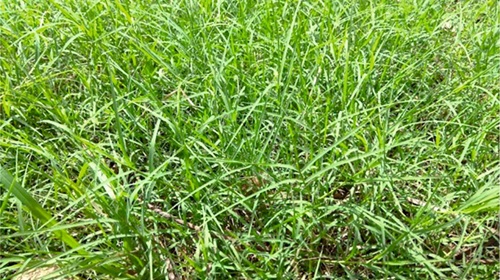Durva grass, also known as Cynodon dactylon, is a sacred and medicinal plant in India. Commonly called “Doob,” “Bermuda grass,” or “Hariyali”, it holds a significant place in Ayurveda as well as Hindu rituals, especially in Lord Ganesha worship. Many people mistake ordinary grasses for durva, but identifying the true plant is important if you want to use it for puja or medicinal purposes. Let us explore the physical features, traditional references, and ways to recognize pure durva grass.

1. Botanical Features of Durva Grass
- Scientific Name: Cynodon dactylon
- Family: Poaceae (grass family)
- Growth Pattern: It grows as a creeping grass, spreading quickly across the ground through runners.
- Stem: Thin, flat, and forms nodes from which new shoots and roots emerge.
- Leaves: Narrow, 2–15 cm long, light green to greyish-green in color, with a soft texture.
2. Leaf Identification
The leaves are the easiest way to recognize durva:
- Shape: Flat, narrow, and pointed at the tip.
- Surface: Slightly hairy at the base but smooth along the blade.
- Arrangement: Leaves grow alternately along the stem.
- Color: A distinctive bright green that looks fresh even under strong sunlight.
3. Flowers and Inflorescence
One unique feature that helps in distinguishing durva grass is its flower:
- The flowering stalks rise above the leaves.
- Each inflorescence usually has 3 to 7 slender spikes radiating from a single point, looking like fingers of a hand.
- The spikelets (tiny flowers) are small, greenish to purple in color.
This “finger-like” flower structure is a strong indicator that the grass is durva.
4. Root and Growth Habit
- Durva spreads with the help of rhizomes and stolons (underground and above-ground runners).
- It grows in mats, covering the soil completely, which makes it an excellent ground cover.
- Roots are fibrous, making the grass drought-resistant and able to grow even in poor soils.
5. Sacred and Cultural Identification
Durva grass is easily recognized during religious use:
- It is always offered in odd numbers (3, 5, 7, or 21 blades tied together) to Lord Ganesha.
- When tied together, the tips of the grass blades form a small pointed cluster, which is unique to durva.
- Other grasses, when tied, do not form this neat and pointed bunch.
6. Difference Between Durva and Common Lawn Grass
| Feature | Durva Grass | Common Grass (e.g., wheat grass, lawn grass) |
| Leaf shape | Narrow, pointed, flat | Wider or more rounded |
| Flower | 3–7 finger-like spikes | No such distinct spikes |
| Growth | Spreads through runners | Grows upright in clumps |
| Religious use | Sacred in Hindu rituals | Not used for puja |
7. Medicinal Properties for Identification
Another way to confirm durva is its medicinal usage in Ayurveda:
- Chewing or applying durva gives a mild, sweet taste.
- It is known to stop bleeding when applied to cuts.
- Fresh juice from durva is slightly cooling and used in traditional remedies for urinary issues and nosebleeds.
These properties are not found in ordinary grasses.
8. Where to Find Durva Grass
- Commonly found in fields, open grounds, gardens, and roadsides.
- Grows best in warm, tropical climates like India.
- It is evergreen and available throughout the year.
Final Thoughts
Identifying durva grass requires observing its narrow pointed leaves, finger-like flower spikes, creeping growth habit, and evergreen color. Its sacred value and medicinal qualities make it unique among grasses. In Indian homes, especially during Ganesh Chaturthi, people ensure they collect only the true durva, as offering anything else is considered inauspicious.
With these identification tips, you can easily recognize pure durva grass in your surroundings and use it confidently for both worship and health benefits.